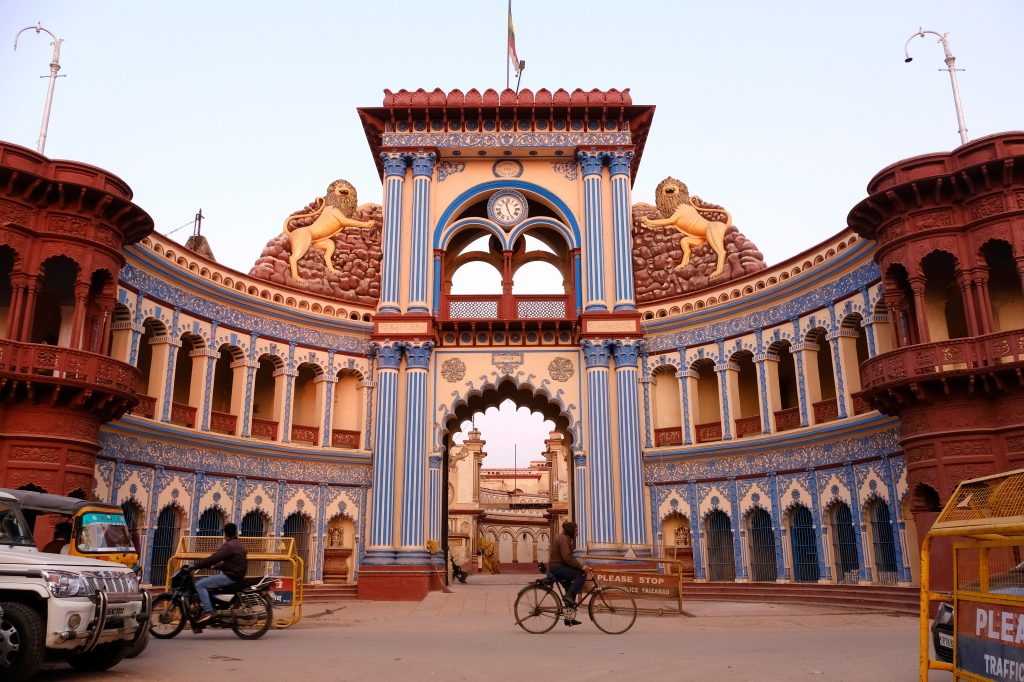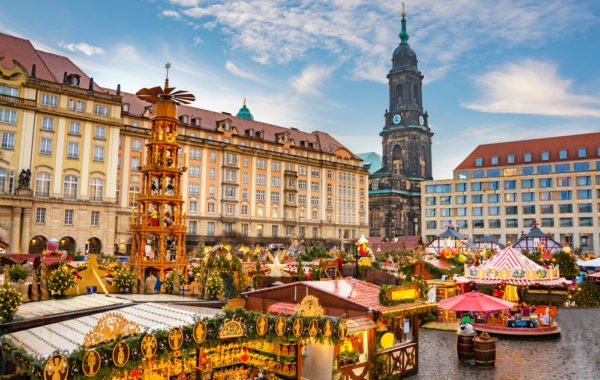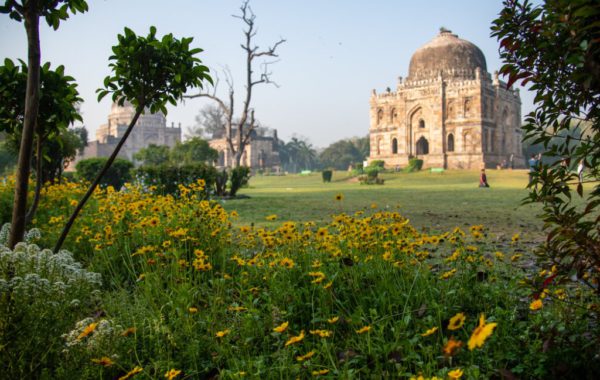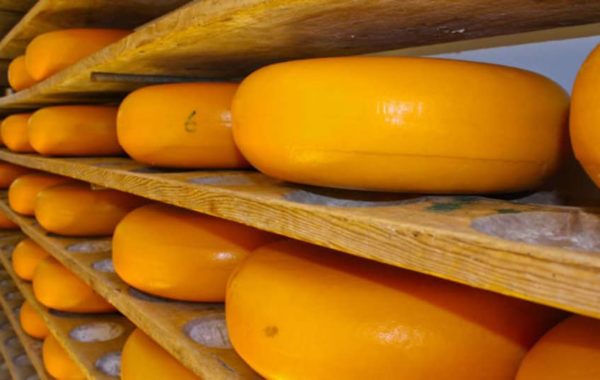With Ayodhya’s increased significance owing to the revered Ram Mandir, here’s a guide for a spiritual traveller on what to see, what to do, what to eat, and where to dine in this sacred temple town also believed to be Lord Rama’s Birthplace.
Ayodhya, often termed the ‘City of Temples’, stands as a spiritual beacon in India. Located on the banks of the Saryu Rive, and steeped in legend, history, and the aura of divinity, this ancient city draws pilgrims and tourists alike, eager to witness its spiritual grandeur. Ayodhya holds a significant position as one of the seven sacred cities, recognized as Hindu Teerth. According to Hindu belief, Ayodhya is the revered birthplace of Rama, a central deity in Hinduism, and this sacred association is chronicled in the epic Indian poem Ramayana.
Must-Visit Spiritual Spots in Ayodhya
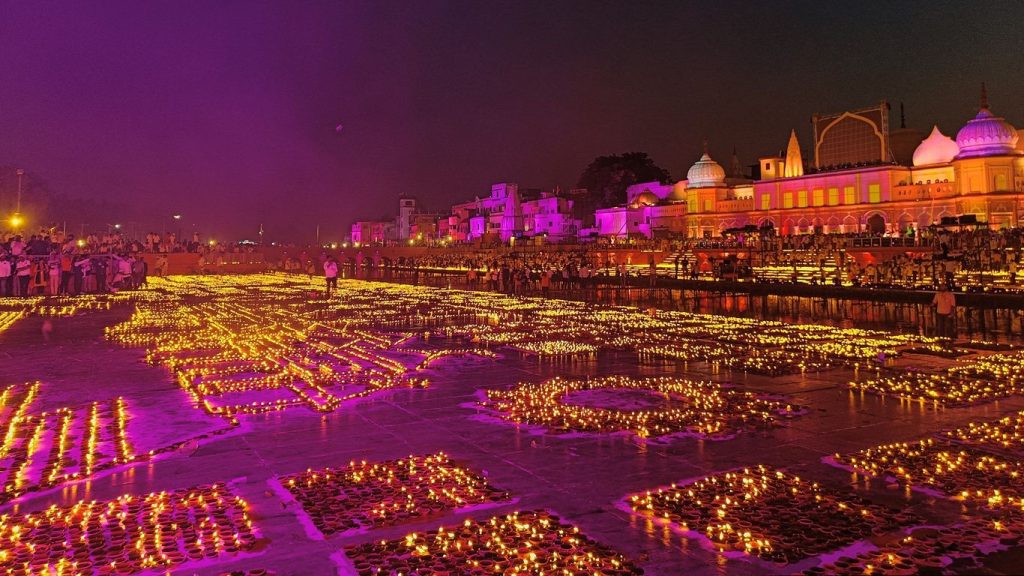
Shri Ram Janmabhoomi Temple
The Shri Ram Janmabhoomi Temple in Ayodhya is scheduled for inauguration on January 22. After the consecration ceremony of Ram Lalla in the sanctum-sanctorum on the same day, the temple will open to devotees from January 24.
Spanning 70 acres, the sacred area of Lord Rama’s birthplace holds mythologically significant elements. The main temple comprises five pavilions—Nritya, Color, Sabha, Prayer, and Kirtan. The three-story structure, each floor 20 feet high, features 392 pillars and 44 gates. The main sanctum will house the child form of Lord Shri Ram (deity of Shri Ram Lalla Sarkar), while the first floor will showcase Shri Ram Darbar. Access to the temple is through the east side, ascending 32 stairs from Singhdwar.
Notable locations within and near the temple grounds include Sri Ram Kund, the residence of holy offerings; Shri Ramlala Purakalik Darshan Mandal, showcasing archaeological and historical relics related to Lord Rama’s birthplace; Karm Khestra, dedicated to sacred rituals; Guru Vashishtha Peethika, a research center for Vedas, Puranas, Ramayana, and Sanskrit studies; Ram Darbaar, a multifunctional projection/lecture and communication center; Tulsi, serving as a Ramlila center and open theater; Bhakti Teela, a special zone for meditation; and Shri Kamm Keerti, a venue for discourse and mass prayer.
Additional attractions encompass Luv Kush Nikunj, a play area for children; Laxman Vatika, featuring a lily pond and musical fountains; Maryada Khand, a residential area for special guests; Ramayan, a library and reading room; and Ramashryam, providing boarding, lodging, and a waiting lounge for devotees.
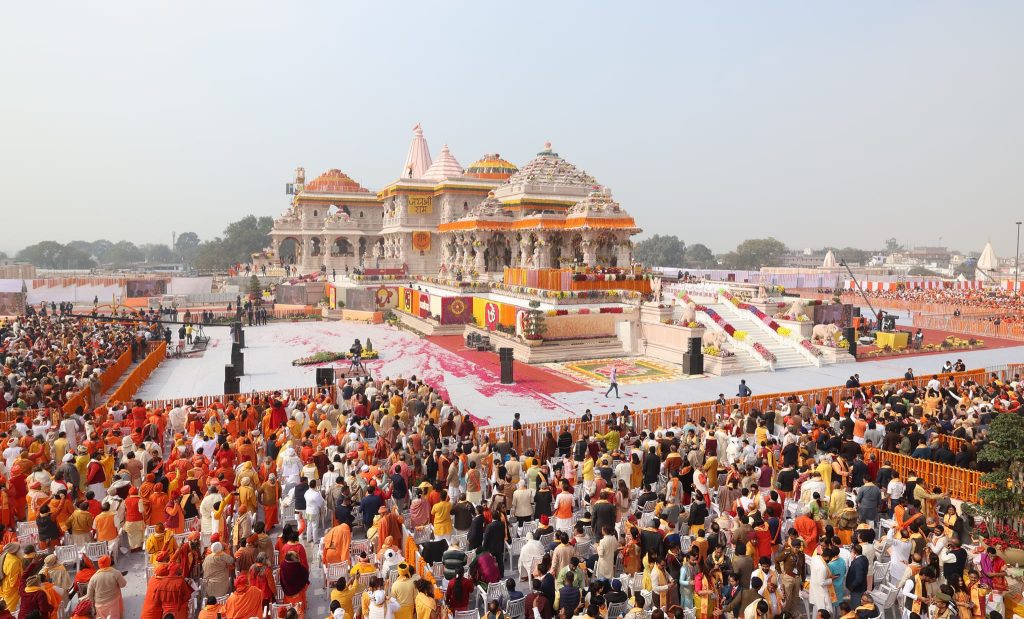
Ram Ki Paidi
Beside the tranquil Saryu River lies a sequence of ghats known as Ram Ki Paidi. The scene is especially enchanting during the evening when the entire area gleams with illuminations. Legend tells us that these ghats are sanctified platforms where pilgrims immerse themselves in the river, symbolically cleansing their souls of sins.
Ram Janmabhoomi
“The Birthplace of Ram” is what Ram Janmabhoomi translates to. This sacred site, believed to be the birthplace of Lord Ram, holds immense significance for devotees. A monumental temple is currently under construction here and is set to open its doors to the public later this year.
Sita Ki Rasoi
Situated in Rajkot, towards the northwest of Ram Janmabhoomi, Sita Ki Rasoi is considered to be the very place where Sita had her kitchen. Today, this revered site has been transformed into a temple housing an exhibition of traditional utensils.
Hanuman Garhi
Legend has it that the temple known today as Hanuman Garhi was commissioned by King Vikramaditya. It is said that Hanuman chose this site to reside in, dedicating himself to safeguard the city of Ayodhya. At the heart of the temple, visitors can behold a touching statue of a young Hanuman nestled in the embrace of his mother.
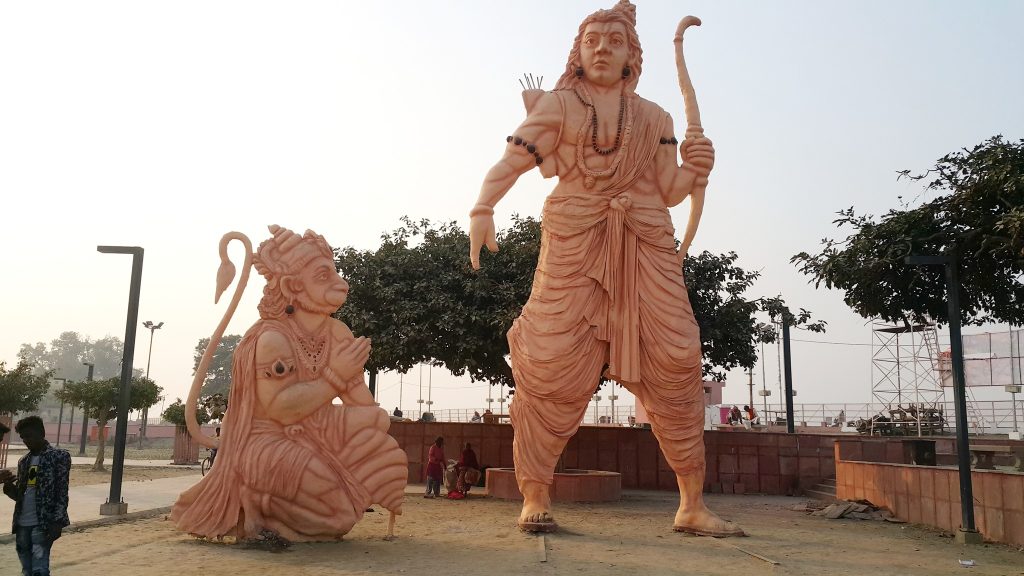
Kanak Bhawan
Kanak Bhawan, a crown jewel among Ayodhya’s temples, is believed to have been a gift to Sita from Queen Kaikeyi post her marriage to Lord Ram. This splendid edifice is also considered to be the private abode of Sita and Ram.
Gulab Bari
This grand mausoleum is the final resting place of Nawab Shuja-ud-Daula, the third Nawab of what was once known as Oudh. At the core of the iconic Charbagh Garden, the tomb stands majestically, surrounded by elegant water channels and sprightly fountains. Legend has it that this structure has underground connections to a boali (stepwell) in Lucknow, serving as a refuge for the descendants of the Nawab.
Nageshwarnath Temple
The Nageshwarnath Temple, situated at Ram Ki Paidi in Ayodhya, is steeped in legendary tales. It’s believed to have been established by Kush, Lord Rama’s son. As the story goes, during a bath in the Saryu River, Kush lost his armlet. This armlet was retrieved by a Nag-Kanya, a mythical serpent maiden, who subsequently developed deep affection for him. Recognizing her devotion to Lord Shiva, Kush built this temple in her honor. Notably, the temple remained in admirable condition until the era of Vikramaditya. The current structure was constructed in 1750, commissioned by Naval Rai, a minister under Safdar Jung. The temple becomes a hub of spiritual activity during Mahashivratri, attracting thousands of devotees. A particularly notable event is the Shiv Barat procession that unfolds during the celebrations.
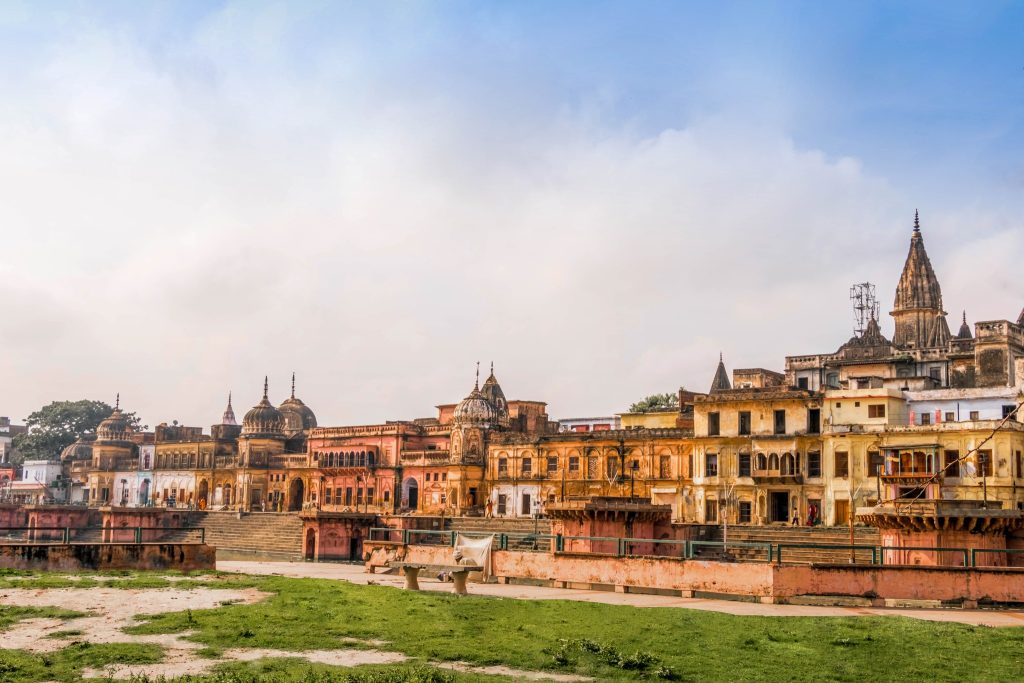
Deokaali
This temple, nestled close to Naya Ghat, is steeped in stories from the Ramayana. Legend has it that after her marriage to Lord Rama, Mother Sita brought with her an idol of Goddess Girija Devi to Ayodhya. To honor the idol, King Dashrath commissioned the construction of a magnificent temple. Here, Mother Sita would often offer her prayers to the Devi. Today, the temple houses a striking statue of Goddess Devkali, the revered local deity.
Birla Temple
The Shri Ram Janaki Birla Temple is a recent addition to Ayodhya’s spiritual landscape. Situated opposite the Ayodhya Bus stop on the Ayodhya-Faizabad route, it pays homage to Lord Ram and Devi Sita.
Jain Shwetamber Temple
Ayodhya is renowned for hosting the sacred events of 18 ‘Kalyanak’ for various ‘tirthankars,’ including being the birthplace and spiritual teaching ground for five Thirthankars: Adinath, Ajitnath, Abhinandannath, Sumatinath, and Ananthnath. Recognizing this significance, Kesari Singh, former treasurer for the Nawab of Faizabad, commissioned the construction of five Jain shrines to honor these Thirthankars’ birthplaces. Among them, the Digamber Jain temple in Ayodhya’s Raiganj area, known as Badi Murti, worships the first Tirthanker, Rishabhdev. This impressive temple features a 31-foot marble statue of Rishabhdev.
What To Eat
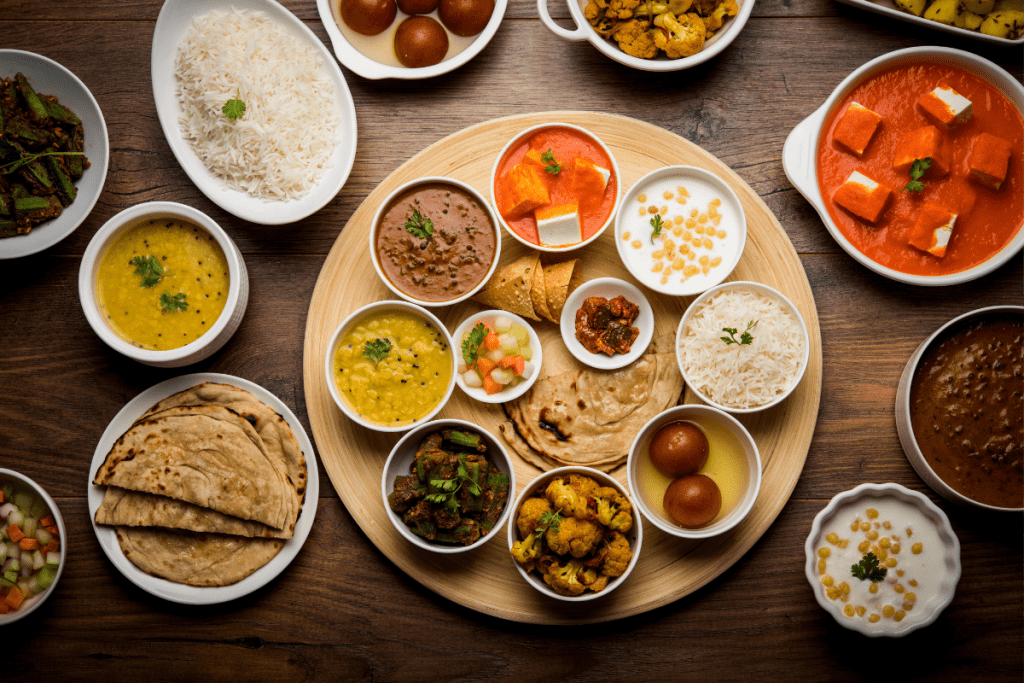
Kachori: Delight in the round and flat kachori, a spicy snack filled with options like baked yellow gram, horse beans, or gram flour seasoned with red chilli powder, salt, black pepper, and other spices, perfect for pairing with chaat or zesty pudina chutney.
Chaat: Explore Ayodhya’s vibrant streets for colorful chaats, a beloved tangy and crispy snack, featuring a variety of savory chutneys. Enjoy it with aloo tikki, paani puri, kachori, samosa, and papdi chaat.
Dahi Vada: Treat your taste buds to Dahi Vada, a renowned snack in Ayodhya, where fried vadas immersed in fresh curd are enhanced with mint and tomato chutneys, cumin seeds powder, black salt, and chaat masala.
Veg Biryani: Relish Ayodhya’s well-known veg biryani, a flavorsome and filling lunch option made with a blend of vegetables, rice, and spices, usually served with raita.
North Indian Thali: Experience the diverse flavors of Ayodhya with a popular North Indian vegetarian thali offered in most restaurants. This satisfying meal typically includes chapatis, rice, dal, sabzi, salad, pickle, papad, and a sweet.
Laddoos: As you visit the city’s religious sites, indulge in the quintessential sweet, laddoos—round, lemon-sized treats made with a mix of dough, sugar, and flour, offering a variety of delectable options.
Rabri: Savor the popular dessert, rabri, made by thickening milk and garnished with chopped dry fruits like cashews and almonds, providing a delightful treat with a touch of Kesar for extra flavor.
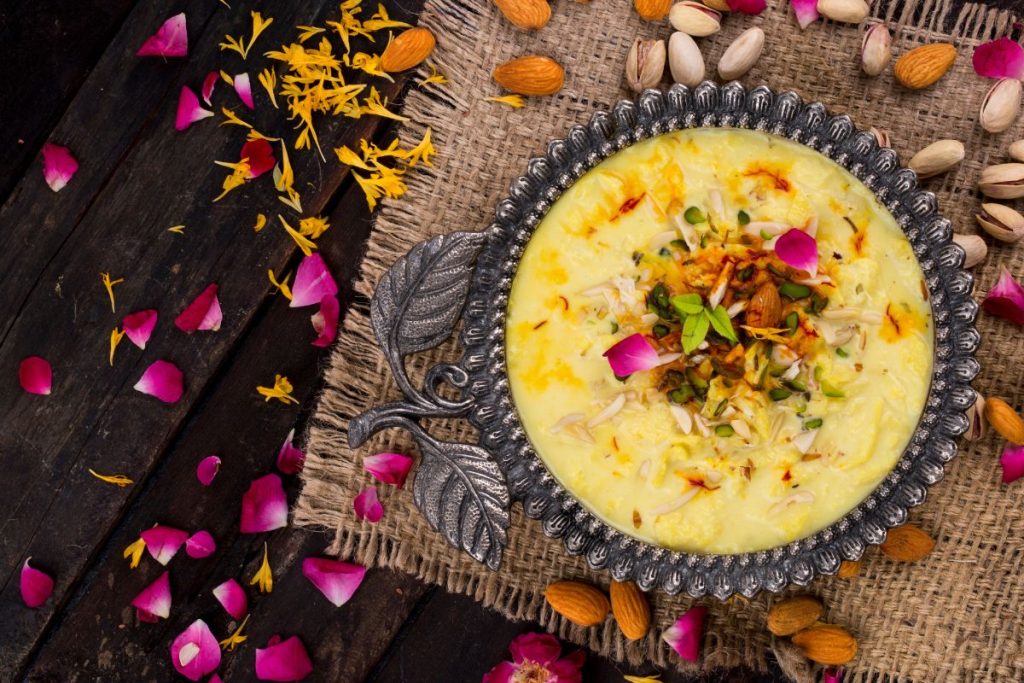
Where To Eat
For those planning a visit to Ayodhya, especially after the momentous inauguration of the Ayodhya Ram Mandir on January 22, we’ve compiled a list of the city’s top vegetarian restaurants for a delightful family meal.
Ram Ki Paidi is a bustling destination for local street food vendors, offering a delightful array of snacks such as chaat, samosas, and more to satisfy your cravings. Shri Ram Bhandar, situated close to the Saryu River, is a popular and unassuming eatery specializing in vegetarian fare inclusing North Indian dishes, including thalis and sweets. Sita Rasoi, conveniently located near Ram Janmabhoomi, presents a menu inspired by Ayodhya’s local cuisine. Indulge in dishes like cholebhature, dosa, and thalis. Ghar Jaisa 2.0 Pure Veg, located at Naka Akbari Office, stands out for its extensive vegetarian menu reminiscent of home-cooked goodness, all prepared with authentic recipes and ingredients. The Auras Restaurant, opposite ITI, promises an exceptional dining experience with a chic atmosphere, soft lighting, and fantastic service. Makhan-Malai, located at Ramprastha Hotel, NH-27, combines good interiors, warm staff, and delectable Indian and Chinese cuisine. The Vaidic, situated at Manas Bhawan, offers a spiritual ambience complementing its delectable vegetarian dishes. Amrut Rasoi, near Tulasi Udyan is a budget-friendly option known for serving delicious vegetarian and vegan dishes. Each of these establishments offers a unique and satisfying dining experience in Ayodhya.
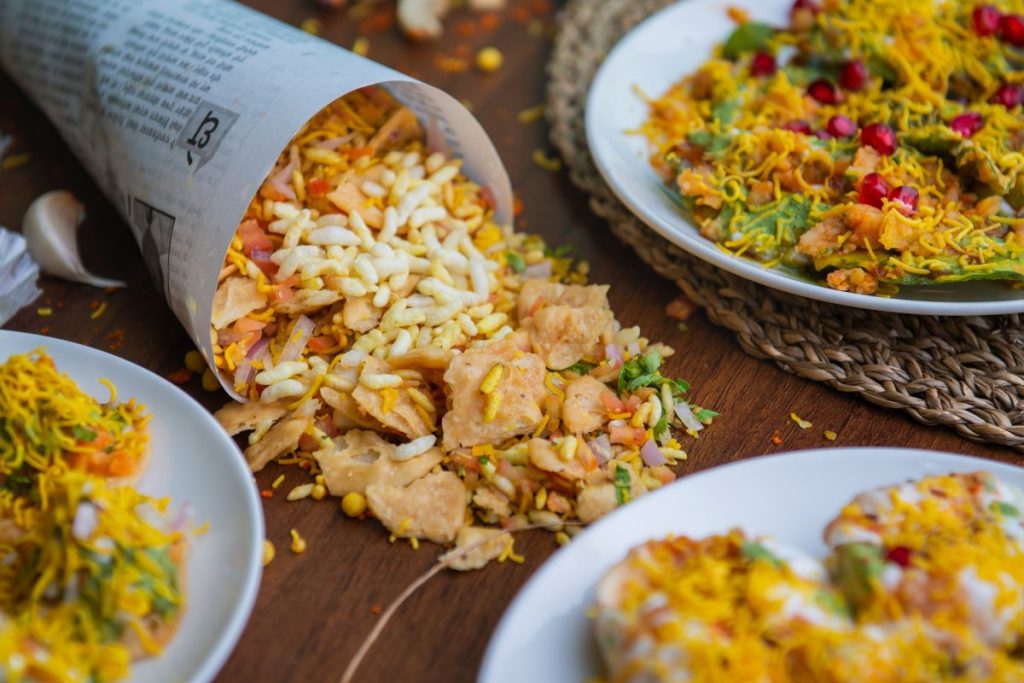
Best Time To Visit: Ayodhya is best visited from October to March when the weather is predominantly cool and pleasant, ensuring a comfortable outdoor exploration experience. Travellers can also visit Ayodhya during festivals. The city of Ayodhya celebrates Diwali and Ram Navami in the most grand way possible.
How To Get There
By Air: The recently constructed Ayodhya Dham Shree Maharshi Valmiki International Airport is situated around 10 km away from the city center. Travelers can also access Ayodhya from Lucknow, Gorakhpur, Prayagraj, and Varanasi Airports. Ayodhya is approximately 6 km from Faizabad, 136 km from Lucknow, and 168 km from Prayagraj.
By Train: Faizabad and Ayodhya serve as major railway stations in the district, well-connected to various cities and towns. By rail, Ayodhya is located 128 km from Lucknow, 171 km from Gorakhpur, 157 km from Allahabad, and 196 km from Varanasi. Additionally, Ayodhya is 135 km from Lucknow, 164 km from Gorakhpur, 164 km from Prayagraj, and 189 km from Varanasi via rail routes.
Ayodhya, with its interwoven tapestry of history, legend, and spirituality, offers an experience like no other. Each corner of the city whispers tales of devotion, sacrifice, and divine incarnations. As you walk through its lanes, the chants, the aromas of incense, and the sheer aura of the place transport you to a different realm—one of peace, introspection, and an undeniable connection with the divine.
For latest travel news and updates, food and drink journeys, restaurant features, and more, like us on Facebook or follow us on Instagram. Read more on Travel and Food Network
Trending on TFN
Long Weekends 2024: You Can Plan 16 Mini Vacations This Year



